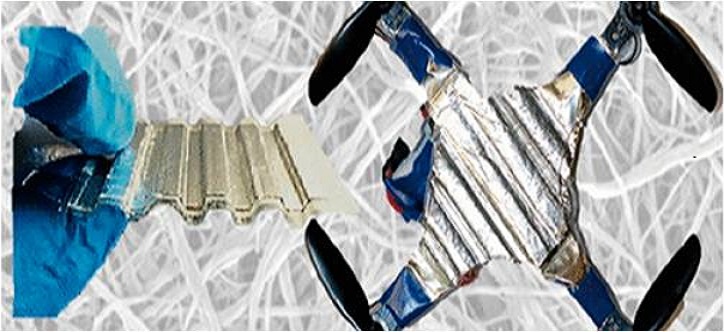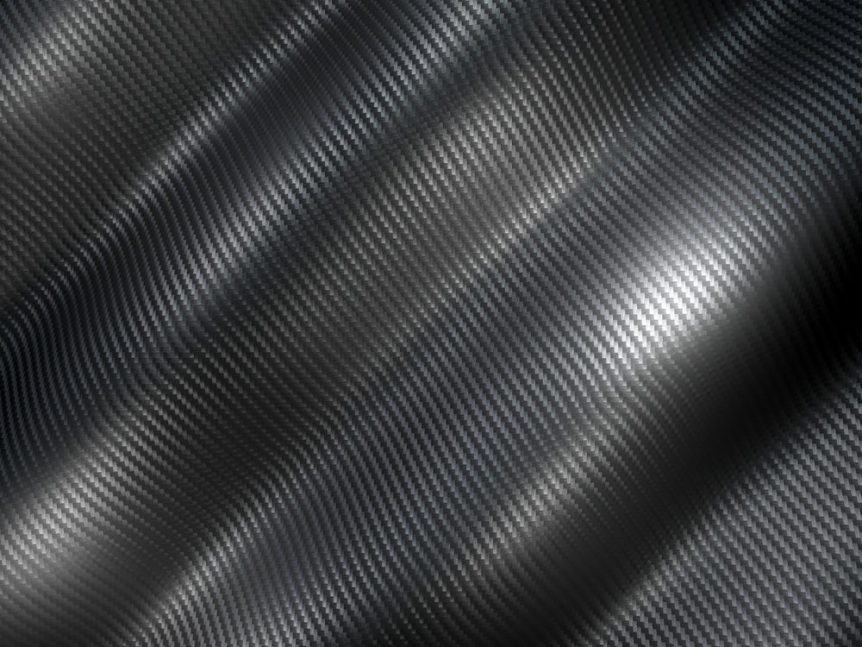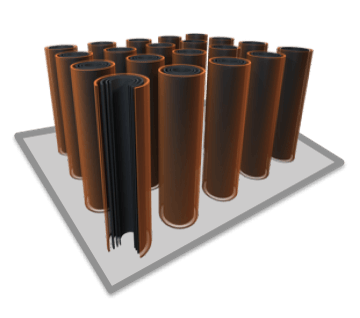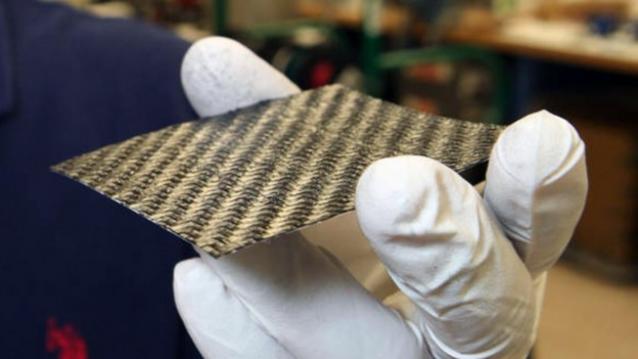Multitudes of researchers have exercised their mental muscles trying to make man-made products mimic naturally-occurring structures. According to University of Michigan researchers, the cartilage in your knees might provide the inspiration for a “structural battery” prototype that would be durable and easy to shape. This blog has long promoted the idea of structural batteries, energy storage systems that could double as strengthening elements in the aircraft shell. Storing energy in car bumpers or airplane wings has some risk elements. What will happen to a battery cracked by collisions on the ground or excessive loads in the air, for instance. Nicking or puncturing existing batteries can cause flaming catastrophes. As U of M researchers note, “[Structural batteries] been a long-term goal for researchers and industry because they could reduce weight and extend range. But structural batteries have so far been heavy, short-lived or unsafe. The school’s tests, described in ACS Nano, ended up with damage resistant, rechargeable zinc batteries with a …
Carbon Fiber and the Grand Unified Airplane
Your editor has long held the belief that we are on the threshold of creating a Grand Unified Airplane, a craft that would draw all its energy from solar cells, the flexing of its wings, the air passing over its form, and the very act of flight itself. It seems to become less of a science fiction ideal and more of real-world possibility every day. Carbon fiber could be part of that possibility. What if your airplane were its own battery? Think of the weight savings and potential endurance and range. Your editor became fascinated with 2010 research done by Dr. Emile Greenhalgh of Imperial University in London, who developed a structural sandwich with carbon fiber outer layers and a fiberglass core. It could be used for body panels on a car, inspiring Volvo to become involved and proceed with initial tests. Since those early tests, other researchers have duplicated and expanded the research, with Dr. Leif Asp of Chalmers …
Two New and Unique Energy Storage Solutions
Lithium-ion and lithium-polymer batteries of various brands provide energy for Teslas, Leafs, and Bolts, but continue to disappoint by stalled energy density, power density, and safety concerns. Two relative newcomers to the field might have answers to these concerns. Unlike many other newcomers, production might be less than five years away. Enovix Corp. Ken Rentmeester, a good friend and retired chemical engineer, volunteers in the local TeenFlight program run by Dick VanGrunsven. He shared his copy of the IEEE Spectrum containing an article about a new battery company that may have some answers to problems common to lithium batteries. The company’s claims for their Enovix battery are impressive. “Patented 3D cell architecture, a patented 100% silicon anode, photolithography, and wafer production increases energy density and eliminates thermal runaway.” Making thermal runaway go away would make the Enovix battery a much desired energy source, especially for electric aircraft. A recent fatal collision of a Tesla Model X with two other cars …
CubeSats, Airplanes Made of Batteries?
Dr. Luke Roberson, Dr. Ryan Karkkainen, and Dr. Xiangyang Zhou are now collaborating on “Creating a structural battery material [that] could revolutionize the way NASA operates small payloads.” Batteries now take up 20 to 35 percent of the volume in some CubeSats, 10 centimeters (3.97 inches) ×10 cm. × 11.35 cm (4.47 inches) cubes, as the name implies. Each CubeSat can weight up to 1.33 kilograms (2.93 pounds). Normally made of aluminum, CubeSats carry batteries for communication, storing energy collected from solar cells on their host vehicles, or powering sensors, cameras, and providing environmental norms for science experiments they carry. Obviously, their small size dictates using every square centimeter wisely. Replacing their inert walls with a structural battery could free up invaluable space that would allow “researchers to perform more science,” according to Roberson. Roberson is a senior principal investigator for Flight Research within the Exploration Research and Technology Directorate at NASA’s Kennedy Space Center in Florida. He collaborates with …
Graphene 3D Lab’s Graphene Filaments Work Magic
Graphene 3D Lab, Inc. has demonstrated that graphene can be easily mixed with thermoplastics commonly used in fused deposition modeling (FDM) 3D printers. The company has demonstrated a mixture of plastics and graphene that can be turned into nanocomposite material filament which can then be used within any standard FDM 3D printer. They have managed to craft a functioning battery which may be incorporated into a 3D printed object during printing. These filaments show good thermal and electrical conductivity and are shown in the video forming a 3D printed battery. Different components require separate “printings” at present, but company CEO Dr. Daniel Stolyarov explains that future iterations of the process will be able to simultaneously produce multiple material parts. His corporate biography lists significant accomplishments. “In his previous role at Energetiq, Dr. Stolyarov and his team won the 2011 Prism Award for the Laser-Driven Light Source they developed. He has also co-authored papers with Nobel and Kavli prize winners, as well …
Load-Bearing Supercapacitors
What if your battery served also as a wing or a fuselage? Several current efforts converge on creating batteries or supercapacitors that could function as structural elements in electric vehicles. We’ve reported on this before, with efforts by Dr. Emil Greenhalgh at Imperial College London and associated work by Volvo to make car components from the type of energy storing sandwich structure he developed. Your editor’s article on the “Grand Unified Airplane” in the July 2013 issue of Kitplanes magazine advanced the idea that such structures, coupled with graphene’s projected capabilities to collect solar energy, could lead to a self-powering aircraft. (In researching the current entry, he found that his idea had been done at model scale by BAE.) Reports from two universities show that others are working toward making that dream less than an idle fantasy. Researchers at Vanderbilt University are making headway toward creating a “Multifunctional Load-Bearing Solid-State Supercapacitor,” as titled in the American Chemical Society’s journal, Nano …




